Printed in the Spring 2019 issue of Quest magazine.
Citation: Leslie, Price,"Blavatsky in the Light of Academe" Quest 107:2, pg 28-33
By Leslie Price
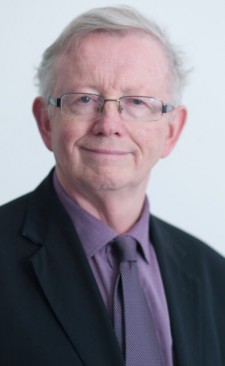 H.P. Blavatsky (1831–91), HPB, as we call her, is the one of the few nineteenth-century esoteric authors widely remembered today. She is, of course known to Theosophical Society members, but not always read by them. Only in recent decades have her (almost) complete works become widely available. Some of her essays and reviews were long out of print until included in the Collected Writings, edited by Boris de Zirkoff and published between 1966 and 1991. The standard edition of her letters is still in progress. There are varying versions of her Esoteric Instructions.
H.P. Blavatsky (1831–91), HPB, as we call her, is the one of the few nineteenth-century esoteric authors widely remembered today. She is, of course known to Theosophical Society members, but not always read by them. Only in recent decades have her (almost) complete works become widely available. Some of her essays and reviews were long out of print until included in the Collected Writings, edited by Boris de Zirkoff and published between 1966 and 1991. The standard edition of her letters is still in progress. There are varying versions of her Esoteric Instructions.
HPB’s reputation long remained under the cloud of the 1885 report of a committee of the Society for Psychical Research, which branded her an impostor, until in April 1986 Dr. Vernon Harrison, in the Journal of the SPR, was able to clear her of having forged the Mahatma Letters.
In Theosophical libraries, we can find many studies of HPB’s teachings. Some of the best were in the Blavatsky Lecture series. But she is now receiving more academic attention than ever before. No doubt that can be arid or hair-splitting, but it is much better than the indifference or contempt that is still found on occasion; it is possible to publish an academic book which discusses HPB, but does not include her own work in the bibliography. One may wonder if the author has actually read her.
In their detailed studies, scholars today often ask the questions that scholars enjoy: What sources did she use? Did she change her mind over time? Who influenced her, and whom did she influence? Theosophists now find themselves in a more crowded landscape. As well as ourselves, who are sympathetic to HPB, and the traditional opponents, who denigrate her—skeptics, fundamentalist believers, rival occultists—there is a community of scholars who can deploy expertise in various languages and who have access to electronic and paper resources which few Theosophical groups can match.
In May 2002, the academic journal Esoterica (not to be confused with the British Theosophical journal of that name) hosted the first North American Symposium on the Study of Esotericism at Michigan State University. There the participants created a new scholarly organization, the Association for the Study of Esotericism (ASE), along with a mission statement and a set of goals. Its primary mission is to support excellence in scholarship and to foster communication among scholars who, though their work originates from a wide range of fields, find esotericism a common theme of their research.
The European Society for the Study of Western Esotericism (ESSWE) is another learned society, established in 2005 to advance the academic study of the various manifestations of Western esotericism from late antiquity to the present and to secure the future development of the field. ESSWE works closely with ASE.
A wide network of supporting groups, publications, and events now exists with the general aim of promoting scholarship into esotericism. Some of their work is freely available in various blogs, websites and inexpensive journals, but other research appears in costly books or periodicals, which presents a challenge to financially hard-pressed Theosophical bodies.
If we are to appreciate the wisdom of HPB, however, we need to pay attention to this new research in order to supplement the original texts and generations of Theosophical comment on them. Fresh eyes, with different presuppositions, may notice points which we have overlooked.
In the Theosophical Society in England (TSE), we got an early warning of this rise of scholarship because it was in London, with the warm support of Dr. Hugh Gray, then general secretary, that the journal Theosophical History was launched in 1985, and the associated TH conferences began in 1986. At that first conference, speakers included Dr. James Santucci, who was teaching a course on Theosophy to religious-studies students in California; the late Nicholas Goodrick-Clarke, later to hold the chair in Western esotericism at Exeter University; and Paul Johnson, who wrote the best-selling HPB study of the 1990s, The Masters Revealed (1994), which incidentally came from a university press: State University of New York Press.
After Santucci became editor of Theosophical History in 1990, the field was firmly linked to scholarship, and most of the great scholars of Western esotericism have contributed to this journal, including Antoine Faivre and Wouter J. Hanegraaff. The doyenne of British historians in the field, Jean Overton Fuller of the Astrological Lodge of London, was a pillar of the TH conferences and the journal.
In 2013 came the launch of “Enchanted Modernities, Theosophy, Modernism, and the Arts,” an international network funded by the Leverhulme Trust, which, through a series of events, exhibitions, and concerts, explored the relationship between Theosophy and the arts from approximately 1875 to 1960. Art historian Janet Lee, then of the TSE executive committee, often represented Theosophists in this seminal project, publications from which are still appearing.
Indeed, esotericism as an academic area is now well established. For the 2015 Riga conference of ESSWE, the program and abstracts alone covered eighty pages. Much of this was not relevant to Theosophy, but some of it was. There was, for example, a seminal paper at Riga on the Masters by one of the leading esoteric historians, Joscelyn Godwin, which will appear shortly in an academic symposium on Theosophy.
These scholarly developments challenge Theosophists to reconsider where HPB’s essential contribution lies.
We learn from the letters of the Mahatmas, and from HPB herself, that she was a messenger, with the mission of establishing a society which would be a vehicle for their message. To help launch the Society, she used phenomena (and came to regret it) and stimulated a general interest in occultism. Gradually through her writings, and through the growth of the TS, these themes were developed. In general, The Secret Doctrine summarized what could be made known about the evolution of the cosmos and of man, while Voice of the Silence set out a spiritual path.
To establish her authority, HPB wrote on many subjects, but it does not appear that she was equally versed in all of them from the beginning. Certainly her writings show her citing some authors and later others, and expressing herself in different ways over time.
A few days before she passed away in 1891, Mme. Blavatsky completed an article entitled “My Books.” It was mainly about the problems with her first book, Isis Unveiled, but had general application. She wrote:
Friends, as unwise as they were kind, spread abroad that which was really the truth, a little too enthusiastically, about the connection of my Eastern Teacher and other Occultists with the work; and this was seized upon by the enemy and exaggerated out of all limits of truth. It was said that the whole of Isis had been dictated to me from cover to cover and verbatim by these invisible Adepts. And, as the imperfections of my work were only too glaring, the consequence of all this idle and malicious talk was, that my enemies and critics inferred—as well they might—that either these invisible inspirers had no existence, and were part of my “fraud,” or that they lacked the cleverness of even an average good writer (Blavatsky, 195–96; emphasis here and in other quotes in the original).
HPB went on to say:
When I came to America in 1873, I had not spoken English—which I had learned in my childhood colloquially—for over thirty years. I could understand when I read it but could hardly speak the language. . . .
I had never been at any college, and what I knew I had taught myself; I have never pretended to any scholarship in the sense of modern research; I had then hardly read any scientific European works, knew little of Western philosophy and sciences. The little which I had studied and learned of these, disgusted me with its materialism, its limitations, narrow cut-and-dried spirit of dogmatism, and its air of superiority over the philosophies and sciences of antiquity. . . .
Until 1874 I had never written one word in English, nor had I published any work in any language (Blavatsky, 197).
However, she insisted:
Save the direct quotations and the many afore specified and mentioned misprints, errors and misquotations, and the general make-up of Isis Unveiled, for which I am in no way responsible, (a) every word of information found in this work or in my later writings, comes from the teachings of our Eastern Masters; and (b) that many a passage in these works has been written by me under their dictation. In saying this no supernatural claim is urged, for no miracle is performed by such a dictation (Blavatsky, 196).
Even when writing on Tibetan matters, HPB would make mistakes. David Reigle, who has done much to establish the authentic nature of her inspiration, has warned of this in an important appendix to one of his papers, “On Errors in H.P. Blavatsky’s Writings”:
Blavatsky brought out a number of erroneous statements that were copied from the published books available at the time. The explanation for this is, I think, not far to seek. Blavatsky, like the secretary of any busy executive today, was given certain basic materials and then left on her own to make a coherent presentation of them. This meant supplementing them with whatever sources were then available. She herself would not necessarily have known that the publicly available sources were faulty, any more than anyone else at that time would have. Her adept teachers were busy men, and simply did not have time to check everything she wrote. This is only common sense, and would have been taken for granted in any other situation. Blavatsky repeatedly disclaimed infallibility for her writings. It is quite unreasonable to assume that everything she wrote is free from errors, as some of her followers assumed. Because much of her material came from her adept teachers, they thought that all of it did (Reigle, 35–36).
Let us to turn to some recent examples of scholarship which help us understand how Blavatsky developed her public work. There is a free online journal called Correspondences. In volume 5 (2017), there are two articles about HPB. The first is “The Theosophical Imagination” by Wouter J. Hanegraaff. He claims:
It is well known that the worldviews of modern Theosophy are based largely on authoritative claims of superior clairvoyance. But what did clairvoyance really mean for Theosophists in the decades before and after 1900? How did it work? And where did the practice come from? I will be arguing that the specific type of clairvoyance claimed by Theosophists should not be confused—as is usually done in the literature—with its Spiritualist counterpart: while Spiritualists relied on somnambulist trance states induced by Mesmeric techniques, Theosophists relied on the human faculty of the imagination, understood as a superior cognitive power operating in a fully conscious state. As will be seen, this Theosophical understanding of the clairvoyant imagination can be traced very precisely to a forgotten nineteenth-century author, Joseph Rodes Buchanan, whose work was subsequently popularized by William and Elizabeth Denton. Buchanan’s theory and practice of “psychometry” is fundamental to the clairvoyant claims of all the major Theosophists, from Helena P. Blavatsky herself (Hanegraaff, 3).
Is this actually so? Our colleagues, such as Erica Georgiades and Kurt Leland (who is an authority on Besant’s and Leadbeater’s work), immediately questioned this, and the debate will continue. For example, Besant’s biographer Dr. Muriel Pécastaing-Boissière will present a paper at the July 2019 ESSWE conference in Amsterdam on Besant’s understanding of clairvoyance.
Moreover, how does Hanegraaff’s analysis fit with the one by Geoffrey Barborka in H.P. Blavatsky: Tibet and Tulku? Barborka understood HPB to be a tulku, that is, an expression of a high Tibetan being, for whom clairvoyance was one of many powers.
The second relevant paper in Correspondences is “Reincarnation in H.P. Blavatsky’s The Secret Doctrine” by Julie Chajes (formerly Julie Hall). She argues that
Throughout her career as an occultist, H. P. Blavatsky (1831–1891) . . . taught two distinct theories of rebirth: metempsychosis and reincarnation. This paper provides a detailed description of the latter, as outlined in Blavatsky’s magnum opus, The Secret Doctrine (1888), and contemporaneous publications. In so doing, it offers several correctives and refinements to scholarly analyses of Theosophical reincarnationism offered over the last thirty years (Chajes, 65).
Even in her own lifetime, Theosophists were trying to reconcile what HPB said in Isis with what was later taught. Did she really teach two distinct theories?
There is a note under the first page of Chajes’s paper: “The publication of this paper was made possible by grants from The Blavatsky Trust and the Israel Science Foundation.” That Trust is of course a supporter of the European School of Theosophy and was a primary sponsor of the chair in Western esotericism at Exeter University. It is clearly aware of the importance of engagement with the academic world.
But I am certainly not arguing that scholars are a new source of infallibility and that Theosophists should defer to them. They can be wrong!
Let me give you an example of this. In May 1964, a new book was reviewed in the Theosophical Journal of the TSE: Giordano Bruno and the Hermetic Tradition by Frances A. Yates.
One can see the attraction of such a book to Theosophists. Was not Bruno a past incarnation of Annie Besant? Are not Theosophists part of the Hermetic tradition? The suggestion made by Frances Yates that occultism imbued the scientific revolution of the sixteenth and seventeenth centuries was congenial. The book was an immense success, and after much other scholarly work, Yates was eventually promoted to Dame Commander of the Order of the British Empire (DBE) for services to Renaissance studies.
More detailed examination by scholars, however, indicated that Yates had gone astray. As Hanegraaff has recently observed:
Most of her guiding assumptions have proved to be incorrect. She misidentified important thinkers such as Marsilio Ficino, Giovanni Pico della Mirandola, and Giordano Bruno as “Hermetic philosophers”; she marginalized the actual Hermetic philosophers active in the Renaissance period; and she miscontextualized the Corpus Hermeticum, suggesting incorrectly that it was grounded in astral magic and concerned with questions leading up to modern science (Hanegraaff, 1–2).
Theosophists must therefore proceed cautiously, like any other students. There are today many scholars working on Theosophy and related topics, and this is welcome, but they, like Theosophists, can fall into scholarly temptation.
What applies to the humanities is also pertinent to science. The founders were very conscious that on one side there was dogmatic theology, its authority declining, and on the other science; already in his inaugural presidential address of 1875, Henry Steel Olcott spoke of “the arrogance of science.” He hoped that there would soon be an actual scientific demonstration of occult power by George Henry Felt, whose famous lecture, “The Lost Canon of Proportion of the Egyptians,” triggered the decision to launch the TS. But Felt did not deliver; neither elementals were conjured up nor anything else.
Olcott also believed that ancient civilizations had practical knowledge of occult science, the “profound scientific attainments of the ancient magi,” as he termed them. Certainly in his travels across the world, he witnessed some remarkable phenomena, but demonstrating what had been known in the past to present-day savants proved more difficult.
After the founders arrived in India, the teachers behind the Society emerged though the Mahatma Letters. We must remember, of course, that these letters were known only incompletely until A. Trevor Barker published the full text in 1923. These teachers attached great importance to science. You will recall the statement of Koot Hoomi in a letter to A.O. Hume: “Modern science is our best ally” (Barker, 63).
Ed Abdill, former vice-president of the TSA, has provided a reassessment of science in the Mahatma Letters and in The Secret Doctrine. In his book Masters of Wisdom, he draws attention to a comment of KH: “If our greatest adepts and Bodhisattvas have never penetrated themselves beyond our solar system,—and the idea seems to suit your preconceived theistic theory wonderfully, my respected Brother—they still know of the existence of other such solar systems, with as mathematical a certainty as any western astronomer knows of the existence of invisible stars which he can never approach or explore” (Barker, 135). Similarly KH writes: “No planets but one have hitherto been discovered outside of the solar system, with all their photometers, while we know with the sole help of our spiritual naked eye a number of them; every completely matured Sun-star having like in our own system several companion planets in fact” (Barker, 162).
Abdill concludes: “These statements of K. were a prediction of what we call ‘exoplanets’ and we now know there are more than a thousand of them” (Abdill, 107). I have highlighted these statements, which are among other correct scientific prophecies by the Mahatmas, because when I was young there were only nine planets and one solar system. Now there is one star, called Trappist 1, which has no less than seven planets, and doubtless this record will soon be broken.
What of current Theosophical contributions to science? Here we are fortunate to have a recent assessment by Egil Asprem, now at Stockholm University, in “Theosophical Attitudes to Science: Past and Present.” This is a seminal paper, which should be studied by all Theosophical leaders.
Asprem reminds us of the danger of celebrating an aspect of contemporary science which appears to support Theosophy. The classic example was the concept of ether, which in Victorian times was believed to be a medium through which a variety of physical phenomena occurred. It was tempting to approximate this to the occultist understanding of the ether. Twentieth-century physics largely dropped the concept of the ether.
Some Theosophists also believed that clairvoyance could be used to obtain knowledge of subatomic realms—occult chemistry. Here too as physics changed, so the Theosophical findings came into question. When I was young. I met Dr. Lester Smith, who was confident that a new interpretation of the findings of occult chemistry could verify them by means of quark theory. At the TS in England today Professor Gwyn Hocking, till recently our national secretary, has reinterpreted occult research in the light of remote viewing.
Between approximately 1935 and 1980, it was possible in the United Kingdom for a Theosophical Research Centre (TRC) to flourish, in which active scientists and doctors carried out research with clairvoyants, and published books, journals, and pamphlets. Indeed in the TSE archives, notes of experiments go back to a Science Group formed in the early 1920s.
About 1960 a crisis took place when the TRC leaders found that some of their research disagreed with what Theosophical teachers had written. This was highlighted by a Discrepancies Subcommittee of the TRC. The only public account of this can be found in the 1998 Blavatsky Lecture by Professor Arthur Ellison.
The TSE therefore closed down the Discrepancies Subcommittee, and in his lecture Dr. Ellison suggested the natural home for such work, which had become the Scientific and Medical Network (SMN), founded in the U.K. in 1973. This reminds us that the teachers made it clear that they worked through bodies other than the TS.
Dr. Asprem concludes his survey of Theosophy and science by citing the work of Dr. Edi Bilimoria, then a senior member of Blavatsky Lodge in London, and since 2011, active in SMN. One of the current SMN initiatives is the Galileo Commission, which is hoping to facilitate a change in the scientific outlook (https://www.galileocommission.org/).
Dr. Bilimoria, who alerted me to this, notes, “Whilst not exactly ‘Theosophy-Science’ it is a major step in that direction preparing the ground, in my opinion, for more esoteric seeds to sprout.”
Is it possible that William Crookes, perhaps the greatest scientist ever to join the TS, who became a member in 1883 and was a personal friend of HPB, was a disappointment as a Theosophist? He never played any part in the administration of the Society or its leadership. He joined the London Lodge, which under the leadership of A.P. Sinnett was largely detached from the work of promoting Theosophy in England. Sinnett was preoccupied with psychism, and I fear that Crookes shared this preoccupation—beyond what the Third Object enjoined.
In our own time, the leading scientist in the TS is Dr. Rupert Sheldrake, and his books certainly advance Theosophical ideas. Dr. Sheldrake celebrated forty years of TS membership in 2018; he had joined when working in India.. But again he plays no part in TS affairs. Perhaps that is wise!
In conclusion: Theosophists should keep in touch with academic research into HPB’s work. One way is through events dealing with particular aspects to which scholars and Theosophists (the two groups overlap, of course) are invited to offer papers. Another is for Theosophists to attend scholarly gatherings where HPB is under discussion.
Theosophical libraries should also invest in the books and journals which report such work. National Sections, for example, and major lodges ought to subscribe to Theosophical History. I commend the practice of the Theosophy Science group in Australia of publishing a regular free newsletter, and of holding conferences, often in association with regular national Theosophical conferences.
The wisdom of HPB lies with that in which she had been initiated, as a disciple on the path, able to show others that path which she faithfully followed. We can learn from noncommitted scholars on many factual points, and they from us, but this is subordinate to the spiritual message and the response of each of us.
Source Material
Abdill, Ed. Masters of Wisdom: The Mahatmas, Their Letters, and the Path. New York: Tarcher Perigee, 2015.
Asprem, Egil. “Theosophical Attitudes towards Science: Past and Present.” In Olav Hammer and Mikael Rothstein, eds. Handbook of the Theosophical Current. Leiden: Brill, 2013: 405–27.
Barborka, Geoffrey A. H.P. Blavatsky: Tibet and Tulku. Adyar: Theosophical Publishing House, 1966.
Barker, A. Trevor, ed. The Mahatma Letters to A.P Sinnett. 3d ed. Adyar: Theosophical Publishing House, 1962.
Blavatsky, H.P. “My Books.” In Collected Writings, vol. 13. Edited by Boris de Zirkoff. Wheaton: Theosophical Publishing House, 1982: 191–202.
Chajes, Julie. “Reincarnation in H.P. Blavatsky’s The Secret Doctrine.” In Correspondences, 5 (2017): 65–93.
Ellison, Arthur. “Science, Consciousness, and the Paranormal.” Blavatsky Lecture, Theosophical Society in England, July 26, 1998.
Hanegraaff, Wouter J. “Hermes Trismegistus and Hermeticism.” In M. Sgarbi, ed. The Encyclopedia of Renaissance Philosophy. N.p.: Springer, 2018.
———. “The Theosophical Imagination.” In Correspondences 5 (2017): 3–39.
Reigle, David. “Tsongkapha and the Teachings of the Wisdom Tradition.” Appendix 2 is entitled “On Errors in H.P. Blavatsky’s Writings.”
Leslie Price was founder editor of the Theosophical History journal from 1975 to 1978 and is currently an associate editor. He was secretary of the Theosophical History conferences held regularly in London from 1986 to 2016. This paper was first presented at the European School of Theosophy in October 2018.
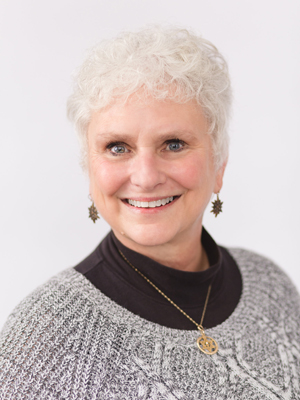 The focus of this issue of Quest is ahimsa. This word, familiar to many who tread the spiritual path, derives from the Sanskrit himsa, meaning to strike, injure, or harm. Ahimsa has the opposite meaning: to cause no harm or do no injury. Ahimsa is to have respect for all life and to avoid violence toward all others.
The focus of this issue of Quest is ahimsa. This word, familiar to many who tread the spiritual path, derives from the Sanskrit himsa, meaning to strike, injure, or harm. Ahimsa has the opposite meaning: to cause no harm or do no injury. Ahimsa is to have respect for all life and to avoid violence toward all others.

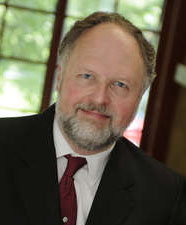 Christianity and Buddhism both speak of love and compassion, although in different proportions.
Christianity and Buddhism both speak of love and compassion, although in different proportions.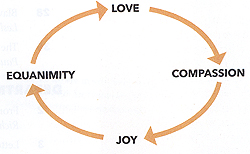
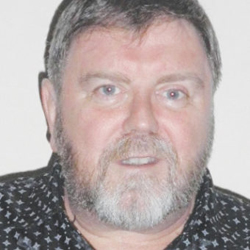 The masterfully told stories of a magical nanny that held adults and children alike spellbound for decades might incline readers to think that Australian author Pamela (P.L.) Travers merely had an overactive imagination. The truth is that her talent blossomed out of a fertile garden of occult teachings and paranormal experiences, nurtured and inspired by some exceptionally gifted personalities in real life. The movie Saving Mr. Banks and the documentary The Real Mary Poppins have treated the public to insights on her relationship with her father, the influence of the aunt she called Sass, and her tumultuous association with Walt Disney. Of equal gravity was her lifelong attraction to mystical pursuits and the guidance of the philosopher and mystic G.I. Gurdjieff.
The masterfully told stories of a magical nanny that held adults and children alike spellbound for decades might incline readers to think that Australian author Pamela (P.L.) Travers merely had an overactive imagination. The truth is that her talent blossomed out of a fertile garden of occult teachings and paranormal experiences, nurtured and inspired by some exceptionally gifted personalities in real life. The movie Saving Mr. Banks and the documentary The Real Mary Poppins have treated the public to insights on her relationship with her father, the influence of the aunt she called Sass, and her tumultuous association with Walt Disney. Of equal gravity was her lifelong attraction to mystical pursuits and the guidance of the philosopher and mystic G.I. Gurdjieff.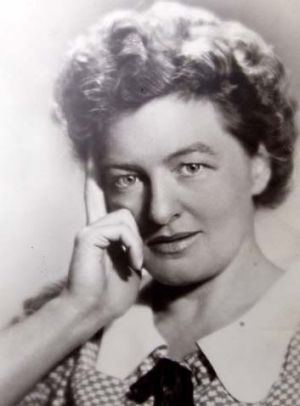
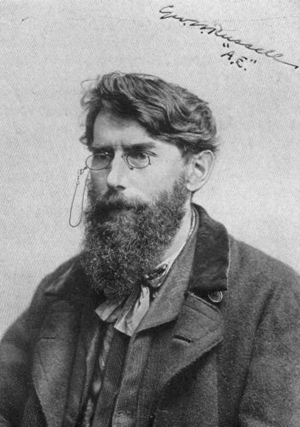
 H.P. Blavatsky (1831–91), HPB, as we call her, is the one of the few nineteenth-century esoteric authors widely remembered today. She is, of course known to Theosophical Society members, but not always read by them. Only in recent decades have her (almost) complete works become widely available. Some of her essays and reviews were long out of print until included in the Collected Writings, edited by Boris de Zirkoff and published between 1966 and 1991. The standard edition of her letters is still in progress. There are varying versions of her Esoteric Instructions.
H.P. Blavatsky (1831–91), HPB, as we call her, is the one of the few nineteenth-century esoteric authors widely remembered today. She is, of course known to Theosophical Society members, but not always read by them. Only in recent decades have her (almost) complete works become widely available. Some of her essays and reviews were long out of print until included in the Collected Writings, edited by Boris de Zirkoff and published between 1966 and 1991. The standard edition of her letters is still in progress. There are varying versions of her Esoteric Instructions.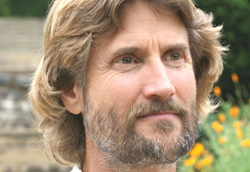 Theosophy, while not a religion but a search for truth, draws heavily from Buddhist insights. Buddhism, like Theosophy and most religions, is a system of teachings aiming to assist its adherents to attain spiritual enlightenment. The underlying idea is that as we cultivate our awareness and awaken spiritually, we naturally help to bring healing and harmony not just to ourselves, but also to our society.
Theosophy, while not a religion but a search for truth, draws heavily from Buddhist insights. Buddhism, like Theosophy and most religions, is a system of teachings aiming to assist its adherents to attain spiritual enlightenment. The underlying idea is that as we cultivate our awareness and awaken spiritually, we naturally help to bring healing and harmony not just to ourselves, but also to our society.